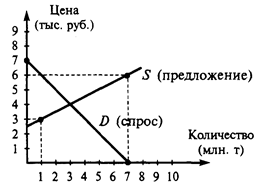E. Лексические тесты.
SLEEPING (1)
Every baby is different and has very 1..... needs. Your 2..... baby may need more than twenty hours of sleep a day or she may only 3..... twelve. You’ll find that your baby’s sleep 4..... is as individual as her fingerprint. We give you some information and practical hints to help you 5..... a sound sleep routine with your child. After nine months of secure, warm comfort, your baby emerges into a strange world of daylight and darkness. For the first few months she’ll 6..... to make any distinction between the two and will 7..... and 8..... whenever it seems right to do so! At the outset sleep is closely related to 9..... and most babies wake when they are 10...... You’ll soon begin to recognize her own timetable and rhythms, which will 11..... when she wakes and for how long she remains 12..... at any one time. As she grows 13..... she will need 14..... sleep as she becomes more and more interested in her surroundings. So by the time she’s about four months old, she 15..... to be wide awake for two or three periods each day. By establishing a pattern for her and by associating night with sleep you will help your baby to settle into a routine pattern of 16..... sleeping. ____________________________ 1. be unable; 2. awake; 3. older; 4. require; 5. less; 6. night-time; 7. individual; 8. hungry; 9. newborn; 10. establish; 11. pattern; 12. newborn; 13. feeding; 14. determine; 15. sleep; 16. wake.
SLEEPING (2)
Your child may wake at night for a variety of 1...... She may be hungry or thirsty, too 2..... or uncomfortably hot. She may just want a reassuring cuddle or she may be telling you that she is 3...... She may wake 4..... because she’s poorly or teething. Most of these simply need practical 5..... or are situations that will resolve themselves in time. Some children seem 6..... for no apparent reason. She may have had a vivid dream or have heard an 7..... noise outside. If she 8....., go to her and pacify her, but try not to bring her out of her room. Check that her room is cosy and quiet and 9..... that the curtains are thick enough to keep out the light. You may 10..... to keep a night light on. Look at what has happened during the day. Is she getting 11..... enough or is she getting 12..... tired during the day? Can you 13..... anything which may be upsetting or frightening her? Try to avoid wild rough and tumbles just before bed too. You could 14..... reading to her, rocking her to sleep, singing or playing gentle music. While it may be temping 15..... her into bed with you this habit can be very hard to break so it’s usually 16..... to leave her in her cot and let her settle there. ____________________________ 1. at night; 2. unusual; 3. need; 4. better; 5. identify; 6. to take; 7. reasons; 8. action; 9. to wake; 10. cold; 11. tired; 12. wet; 13. make sure; 14. cries; 15. try; 16. too.
BLOOD
Blood is a fluid which 1..... though the arteries, capillaries and veins exchanging fluids and gases with the bodily 2...... The latter receive the products 3..... from the food and oxygen taken up by the blood in its passage through the lungs, while the blood 4..... from the tissues carbonic acid gas and various waste products. Composition. The blood 5..... of corpuscles in addition to the fluid is well-known. They are of the three 6.....: red corpuscles (erythrocytes), white corpuscles (leucocytes) and blood platelets (thrombocytes). In the fluid are dissolved the various salts and 7...... We know the red corpuscles acting as the 8..... of oxygen, which acts as a medium of interchange between the 9..... of the air in the lungs, and the tissues requiring it. There are over 5000000 red corpuscles in every cubic millimeter of 10...... The white corpuscles are of 11..... different kinds, they have many functions to perform, of which the chief are repair of 12....., the absorption of foreign bodies, and the 13..... of bacteria; their 14..... bodies being in large numbers form the matter or pus of abscesses. Blood groups. People are 15....., in respect of certain reaction of the blood, into four groups. Their being divided into these groups 16..... upon the capacity of the serum of one person’s blood to 17..... the red blood corpuscles of another’s. The reaction depends on antigens in the red corpuscles and 18..... in the serum. There are two of each, the antigens being known as A and B. Anyone’s blood 19..... may have (I) no antigens, (II) antigen A, (III) antigen B. (IV) antigens A and B: these are the four groups. The practical 20..... is that, in blood transfusion, the person giving and the person 21..... the blood should belong to the same blood group, or a 22..... reaction will take place from the agglutination. ____________________________ 1. proteins; 2. several; 3. kinds; 4. dead; 5. receiving; 6. corpuscles; 7. circulates; 8. consisting; 9. removes; 10. dangerous; 11. destruction; 12. problem; 13. absorbed; 14. wounds; 15. divided; 16. blood; 17. antibodies; 18. agglutinate; 19. depends; 20. tissues; 21.carriers; 22. oxygen.
|




